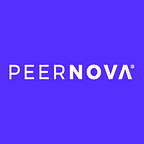4 Steps on How to Improve Data Quality for Better Risk Management in 2022
Today, firms are gathering data at a record rate. However, its quality determines whether it will be beneficial or detrimental to a business. When it comes to risk management, inaccurate data will essentially put more strain on data management practices and result in hefty regulatory fines and increased capital requirements. Therefore, firms must learn and understand how to improve data quality for better risk management.
When it comes to risk management, data quality is the Achilles’ heel. It is no secret that banks and financial firms are highly regulated and put through stringent tests. Non-compliance results in more than large penalties, but also customer dissatisfaction and reputational damage. Staying one step ahead of regulatory requirements requires strong data management and data quality models. Only then can firms confidently submit data and make proactive decisions that support their business goals.
4 Steps on How to Improve Data Quality For Better Risk Management
While an organization can’t completely avoid risk, anticipating and mitigating problems through effective risk management is possible. To improve data quality for better risk management, firms must focus on solving current bottlenecks and challenges.
1. Unify Data Silos
Data silos may seem harmless, however, their fragmentation results in inaccessible and inaccurate information. Siloed systems create significant barriers to efficient, compliant, and successful data management. Without a holistic view of all data, firms are unable to detect business opportunities and most importantly, threats. Important data management practices such as data quality and data governance become difficult, often impacting regulatory compliance and opening the door to misuse of sensitive data.
2. Establish a Single Source of Truth
In order to establish business-wide data quality, it’s critical that an organization establishes a single source of the truth for reporting, risk management and control, and treasury activities. Without a single source of truth, firms can struggle to identify the origin of the piece of data amongst the fragmented landscape.
3. Create Business and Data Quality Rules
One of the most effective ways to ensure data is always high-quality is by implementing business and data quality rules. This real-time approach incorporates a predefined set of business and data quality rules that are automatically and continuously applied to all data.
4. Provide Continuous, End-to-End Data Quality Monitoring
Lastly, continuous end-to-end data quality monitoring is critical for ongoing risk management. Instead of an ad-hoc approach, firms must consistently apply data quality and business rules across their organization for proactive data management.
The Solution: Cuneiform Data Quality Monitoring For Better Risk Management
Implementing the Cuneiform Data Quality Monitoring platform is a critical step in ensuring and improving risk management. The zero-code solution provides continuous dynamic end-to-end (E2E) data quality monitoring, business value impact metrics, and exception resolution.
Cuneiform Data Quality Monitoring offers the following for better risk management:
Unifies Siloes
Breaks down these silos, ensuring E2E data quality and providing a unified view of all data and metadata.
Single Source of Truth
Builds a single source of truth across workflows through cross-functional collaboration through the platform’s lineage of data and metadata.
Data Quality Metrics
Continuously measures and monitors data completeness, correctness, consistency, and timeliness across workflows, datasets, transactions, and events.
Data Quality and Business Rules Engines
Enables firms to rapidly define and deploy data quality rules and controls across the organization.
Business Workflow Lineage
Offers real-time Business Workflow Lineage™, with traceability and auditability of source data.
Business Value Impact Metrics
Calculates a data quality score and prioritizes each error based on its total business impact.
Automated and Streamlined Root-Cause Analysis
Quickly identify, address, and resolve exceptions efficiently to eliminate manual and laborious processes.
Machine-Generated Code
Offers a self-serve, drag and drop interface to dynamically create, configure, and execute data quality rules without significant coding knowledge.
Beyond staying one step ahead of regulatory requirements, having accurate, accessible, and transparent data drives confident decision-making and supports strong risk management. PeerNova’s Cuneiform Data Quality Monitoring is the answer. For more information or to experience the platform yourself, request a demo today!
Originally published at https://resources.peernova.com on January 10, 2022.
